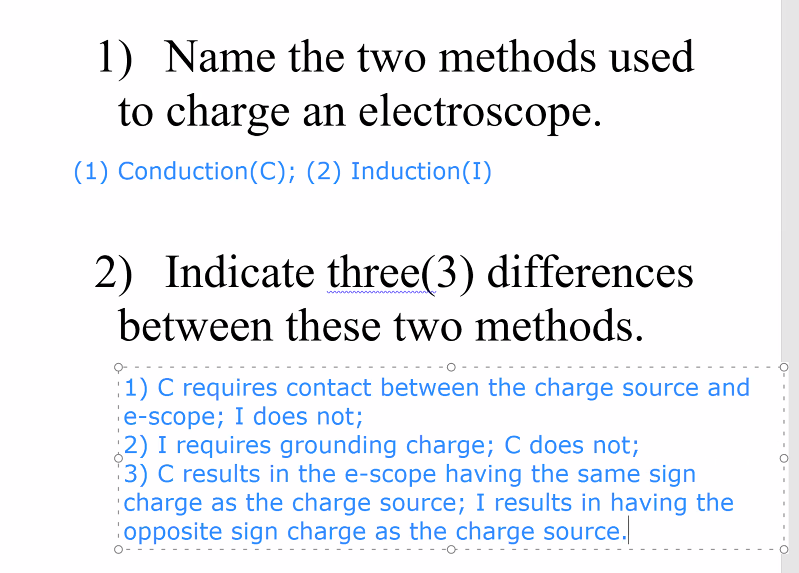GNU LGPL v3
Charge.
- Some things have a positive charge and others have a negative charge.
- Opposite charges attract each other.
- Like charges repel away from each other.
- Charged objects attract neutral (uncharged) objects
- Contact:
- Movement/transfer of electrons between objects.
- e is the charge of a proton.
- -e is the charge of an electrons.
- The coulomb (C) is a unit of charge.
- 1C ~= (6.24)(10^18)(e) is a coulomb in terms of e.
- e ~= (1.60)(10^(-19)) C is e in terms of coulombs.
- A coulomb is the amount of charge transferred by a 1A current in 1s.
- 1A refers to 1 ampere, a unit of current.
Coulomb's Law.
- _F(e) =(k _ |q(1) * q(2)|) / r^2*
- F(e) is electrostatic force. Units is Nm^2 / C^2
- q(1) and q(2) are the magnitudes of the 2 charges.
- If q(1) and q(2) has same signs, repelling force.
- If they are different signs, attractive force.
- k ~= 9 * 10^9
Electroscope questions for test.

Ohm's Law.
- V = IR
- Voltage (V)
- electric potential
- PE per unit charge
- measured in Volts (V) which is J/C
- Current (I)
- change per unit time
- measured in C/s aka amperes (A)
- Resistance (R)
- how much charge flow impeded
- denoted by Ω
- Voltage (V)
Power.
- P = VI
- P = RI^2